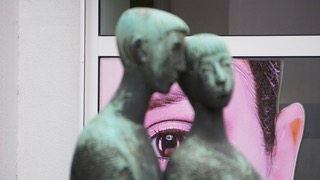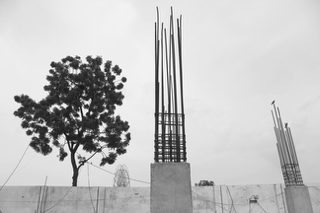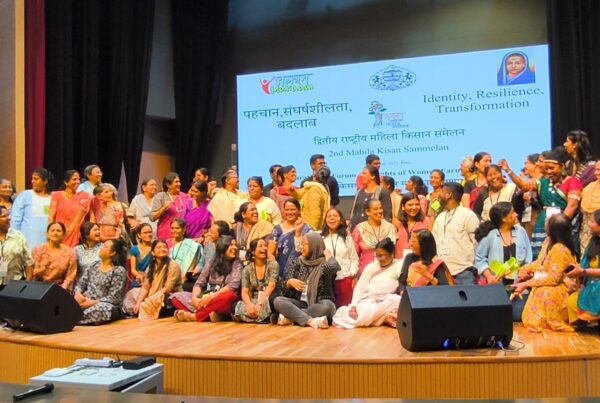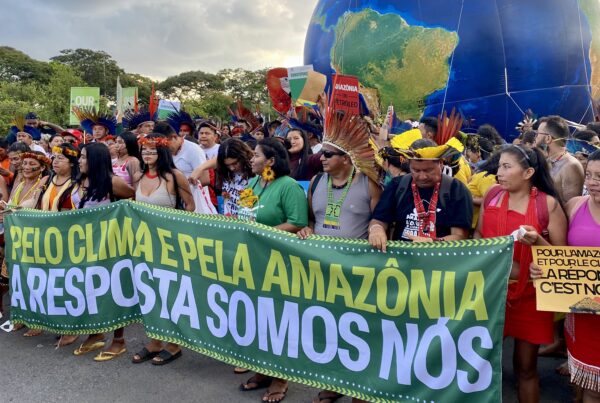How do systems of extraction affect our nervous systems, and what does it take to repair them?
The nervous system does not backdrop life; it carries it. Neurons spark like wildfire, each impulse echoing through tangled fibers, transmitting decisions to flee, resist, or settle. It is an intimate sensorial circuit of survival, a continuous negotiation between body and world. Under capitalism and patriarchy, this system becomes a battleground, a place where power settles its debts. Histories of violence and extraction are not confined to textbooks or courtrooms; they live in trembling hands, shallow breaths, and bodies braced against constant threat. The nervous system—like soil exhausted by overharvesting—bears the scars of a world that extracts until nothing is left.
For decolonial feminist thinkers such as Julieta Paredes, the body is not a symbol but a material terrain of struggle – el cuerpo-territorio, the body-territory. It is the first frontier of colonization, where control over land parallels the control over psychosomatic systems. Capitalism’s insatiable demand for productivity rearranges biological rhythms, interrupting the body’s natural cycles of rest, recovery, and connection. The nervous system is drafted into this logic of unending output, and its regulation is broken apart, leaving survival as its only function. Stress accumulates as a structural condition. The body adapts, but the cost is borne in exhaustion and fragmentation.

Credit: Chayan Sonane.
The Nervous System as Extraction’s Mirror
The conditions of modern life amplify nervous system dysregulation, fragmenting the body’s capacity for repair. Capitalism thrives on scarcity—not just in material resources but in time, rest, and relational safety. The result is a system that pushes bodies into hyperarousal or hypoarousal. In hyperarousal, the nervous system fires relentlessly, scanning for danger, managing crises, never settling. Hypoarousal, on the other hand, is a state of collapse: the body withdraws into numbness, unable to act. Both are survival strategies, not failures. Yet, neither allows for healing or imagining a different way of being.
This regulation crisis is not distributed evenly. The weight falls on those whose labor sustains life but remains undervalued: caregivers, subsistence farmers, Indigenous peoples, and women performing unpaid domestic work. These groups, whom ecofeminist Ariel Salleh identifies as the “meta-industrial class,” bear the brunt of systemic extraction while maintaining the vital work of care and regeneration. Their nervous systems endure the shocks of poverty, ecological destruction, and systemic neglect, even as their labor forms the basis of any meaningful resistance to these systems.

Unsold cars in Japan. Credit: Alice Rogovoy.

A woman sweeping a street. Bhopal, India. Credit: Chayan Sonane.
Nervous Systems in the Polycrisis
The interconnected crises of climate, inequality, and social fragmentation—often called the polycrisis—do not simply break down ecosystems and economies. They disrupt bodies. Chronic dysregulation is built into the design of modern systems: the hypervigilance required to meet ever-increasing demands, the numbing effects of burnout, the physiological imprint of multigenerational trauma. These patterns are amplified in marginalized communities, where systemic violence leaves bodies oscillating between tension and collapse.
This dysregulation also reinforces political compliance. Hyperaroused bodies stay alert, reacting to immediate threats but unable to reflect on systemic change. Hypoaroused bodies fall into inertia, losing the capacity to resist. These physiological states entrench inequality, keeping individuals in survival mode, unable to envision or build alternative futures. This is not accidental; it is foundational to the maintenance of extractive systems. By keeping bodies tethered to survival, capitalism ensures its continuation.
From Extraction to Repair
Healing the nervous system is not a matter of individual self-care or isolated interventions. It requires a rethinking of societal structures that perpetuate dysregulation. As interpersonal neurobiologist Bonnie Badenoch highlights, the nervous system is inherently relational. It develops and repairs through co-regulation, the shared experience of trust, presence, and safety. Healing happens in connection: a soothing voice, synchronized breathing, or the steadiness of another’s presence. These are not minor comforts; they are essential conditions for nervous system repair.
Yet, in a society fractured by extraction and competition, opportunities for co-regulation are eroded. Rebuilding them demands more than individual acts of care—it requires systemic change. Restorative justice practices, cooperative economies, and community-centered care models create the conditions for nervous systems to find stability and repair. This is not just about stopping harm but actively cultivating spaces where healing becomes possible on a societal scale.
Reparations as Healing Infrastructure
The material conditions for healing cannot be separated from the broader project of justice. Reparations—redistributing land, resources, and power to those harmed by systemic violence—are necessary for addressing the nervous system’s scars. Safe housing, access to healthcare, and collective resource management create the foundation for bodies to rest, regenerate, and reconnect. Healing the nervous system is not about retreating from the world but transforming the structures that dictate its rhythms.
Degrowth offers one framework for this transformation. By rejecting the logic of endless extraction and prioritizing sufficiency over profit, degrowth creates the space for bodies and ecosystems to recover. It challenges the economic imperatives that tether human worth to productivity, allowing for a reorientation toward care and collective well-being.
Disability justice movements also provide critical insights. They emphasize the value of interdependence, challenging the capitalist ideal of independence as self-sufficiency. By recognizing that all bodies rely on support—physically, emotionally, and materially—these movements offer a vision of society where care is not a burden but a shared responsibility.

Infrastructure. Ahmedabad, India. Credit: Chayan Sonane.
Futures of Repair
Feminist scholar Donna Haraway’s call to “stay with the trouble” reminds us that healing is not about escaping complexity. The nervous system’s repair must happen within the very worlds it seeks to change. This means acknowledging the interconnectedness of human and ecological systems, embracing the messy, relational work of rebuilding connections. It requires holding space for the unresolved, metabolizing histories of harm into new forms of kinship and resilience.
Imagine neighborhoods designed for co-regulation, where cooperative housing, community gardens, and shared care networks create environments of safety and abundance. Picture reparative justice not as an abstract ideal but as concrete action: land returned to Indigenous stewardship, resources redistributed, and systems of punishment replaced with restorative practices. These are not distant dreams; they are tangible possibilities grounded in the recognition that survival depends on relational repair.
Conclusion
Healing the nervous system is not a personal endeavor; it is a collective project, one that requires dismantling the systems that fracture it and building conditions for rest and repair. It demands justice—not as an abstract principle but as a material practice of redistribution and care. By reimagining society around the values of connection and sufficiency, we create the conditions for bodies and communities to thrive.
The nervous system, like the ecosystems it mirrors, is not separate from the structures that shape it. Healing is not a return to some imagined purity but a deliberate act of creation—a reconfiguration of relationships, environments, and economies to prioritize life over extraction. This is the work of imagining futures where bodies are no longer bound by fear but are free to connect, rest, and flourish. It is the work of rebuilding a world where care is not the exception but the rule.




